Neck Pain Exercise
- Neck exercises are mostly recommended by doctors in the treatment of neck pain. A common neck exercise program that improves your Neck posture, strengthens Neck muscles, improves Neck flexibility,y and also reduces nerve compression.
- Here we suggest you few Best exercises that are easy to perform at home, neck exercises to give relief from neck pain caused by abnormal neck posture, and also suggest how to take precautions during exercise for Neck pain.
Neck Pain Introduction
- Neck pain can be caused by a number of factors, including muscle strain, ligament sprains, arthritis, or a “pinched” nerve. Approximately 10 percent of adults have neck pain at any one time. The majority of patients, regardless of the cause of pain, recover with conservative therapy. Pain severity may not correlate with abnormalities seen on imaging of the neck.
- The neck’s vulnerability to injury is high due in part to biomechanics. Activities and events that affect cervical biomechanics include long sitting positions, repetitive neck movement, accidents, falls and blows to the body or head, normal aging, and everyday wear and tear.
List of Neck exercises:
- Neck tilt exercise
- Neck tilt ( side to side ) exercise
- Neck turn exercise
- Neck stretch exercise
- Upper Trapezius Stretch
- Levator Scapular Stretch
- Wall Push Up
- Prone Rows
- Shoulder Scapular Exercise
- Isometric Neck Exercise
1. Neck tilt (Active Neck movement ): Flexion – Extension of the Neck
These exercises are easy to perform home exercises that maintain neck range of motion and reduce neck stiffness.
- Tilt your head down to rest your chin on your chest.
- Gently stretch your neck muscles and hold for 5-8 seconds.
- Return to a neutral position and repeat 8-10 times.
2. Neck tilt (side to side) :
- Tilt your head down towards your shoulder, leading with your ear.
- Gently tense your neck muscles and hold for 5 seconds.
- Return your head to the center and repeat on the opposite side.
- Repeat 5 times on each side.
3. Neck turn:
- Turn your head towards one side, keeping your chin at the same height and moving within comfortable limits.
- Gently tense your neck muscles and hold for 5 seconds.
- Return your head to the center and repeat on the opposite side.
- Repeat 5 times on each side.
4. Neck stretch:
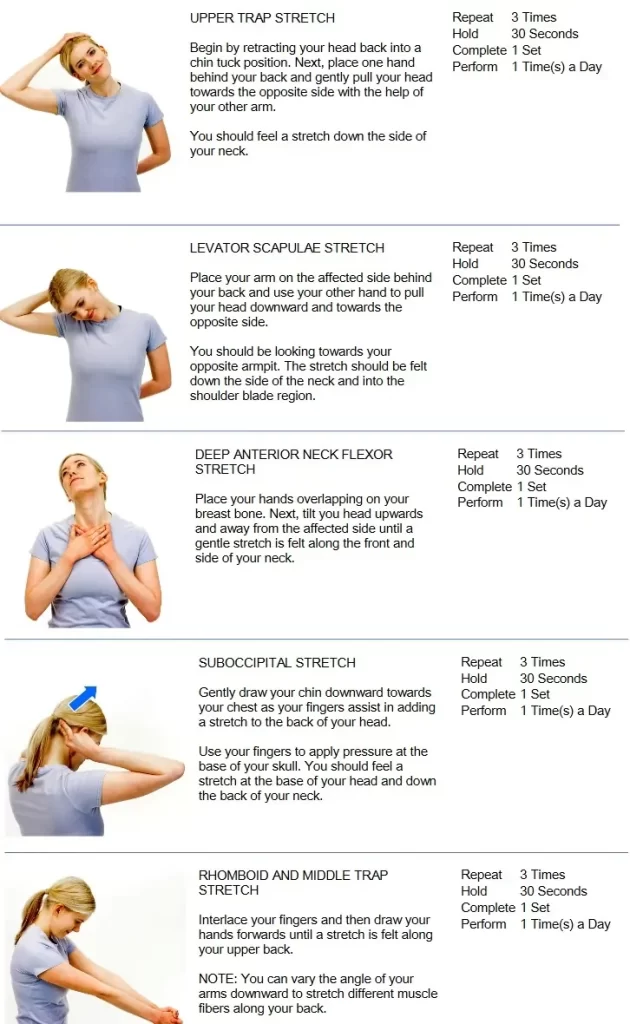
- In a sitting position, Keeping the rest of the body straight, push your chin forward so your throat is stretched.
- Gradually stretch your neck muscles and hold for 4 to 8 seconds.
- Return your neutral position to the center and push it backward, keeping your chin up.
- Hold for 4 to 8 seconds.
- Repeat 8-10 times.
4 Upper Trapezius Stretch:
- Sit up tall with good posture keeping shoulders down. Grasp the bottom of the seat with one hand. Slightly turn your ear to your shoulder until a comfortable stretch is felt on the opposite side of the neck. Hold that position for 20 seconds. Repeat to each side 3 times. Perform this exercise 2 times per day.
6 Levator Scapular Stretch:
- Sit up tall with good posture keeping shoulders down. Grasp the bottom of the seat with one hand. Slightly turn your chin toward your armpit until a comfortable stretch is felt on the opposite side of the neck. Hold that position for 20 seconds. Repeat to each side 3 times. Perform this exercise 2 times per day.
7. Wall Push Up:
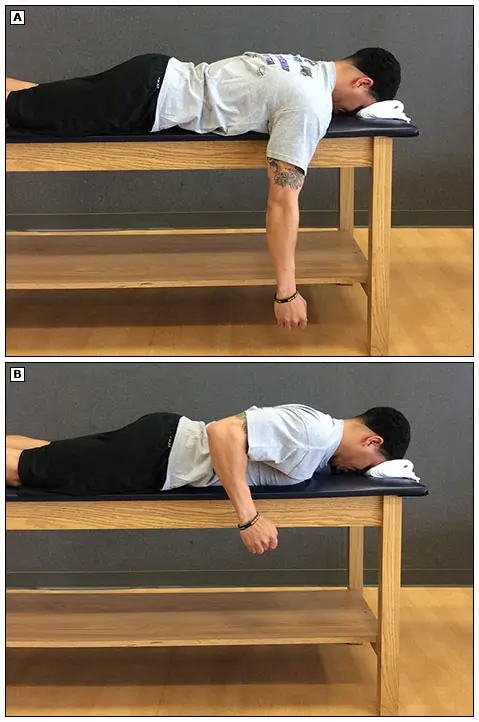
- Start with feet approximately shoulder width apart. Place hands against the wall slightly below shoulder level and elbows straight as shown in the picture. Bend elbows while keeping your head in a neutral position. Repeat 10 times with 1-2 sets. Perform this exercise 2 times per day
8. Prone Rows:
- Lie on your stomach with your arms dangling off the side of the bed (try angling your body so your head is facing the corner of your bed). Use a pillow under your stomach for comfort.
- Begin by pulling arms back while bending elbows and squeezing shoulder blades together then slowly return to the starting position. Do not lift your head up while pulling your arms back. Repeat 20 times. Perform 2 times per day.
9. Shoulder Scapular Exercise:
Shoulder scapular exercise helps to strengthen Shoulder Neck muscles and helps to relieve neck pain.

Steps to do Exercise :
- Exercise -1: Place your both hands behind the neck with an elbow flexed position and then try to do elbow forward and backward 10 times and then relax.
- Exercise – 2: Elevate your shoulder and then depressed and repeat 10 times and relax.
- Exercise – 3: Protract and Retract your shoulder 10 times and relax.
10. Isometric Neck Exercise:
Isometric neck exercise helps to strengthen weak neck muscles without aggravating pain. This exercise is easy to do home exercise and also useful in acute pain.
Steps to do Exercise :
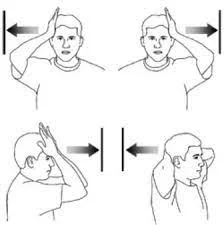
- In a sitting Position, Place both hands behind the neck and try your neck to push pressure on your hands and the same time Resist with your neck muscles, both hands maintain the aligned position for 4 to 5 seconds, and then relax.
- First day do 5 repetitions and second day 10 repetitions. do the same exercise on your forehead and side of the neck.
- Do the exercise again, pressing on the side of your head. Repeat 5 times.
DO’S & DON’T FOR NECK PAIN (Neck care):
- Maintaining a good posture
- Simple exercises to relieve pressure and strain on the structures within the neck – Gently stretch your neck from side to side or up and down
- Maintain a good overall health and nutrition status
- Don’t let stress levels get the better of you
- Don’t roll your neck
- Don’t bend your head to one side while talking on the phone
- Don’t use hard pillows while sleeping
Which pillow is Best for Neck pain?
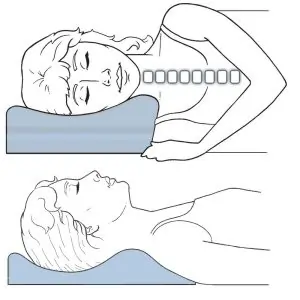
- Your sleeping position and pillow may play a role in Neck pain. Prone-position sleepers have higher chances of neck pain.
- Taking an Alternate position means your neck is turned to either side and your spine is in relaxed mode.
- For Pain relief, experts recommend trying to sleep either on your back or on your one side and choosing the Best pillow that helps support the neck.
To Select a Pillow for Neck Pain following tips are useful:
- A pillow that maintains a neutral and Natural Neck Position during sleeping position.
- Pillow that is soft and also firm enough to maintain the head position for a longer period.
- Pillows play an important role in allowing the Neck to rest and recover. By supporting the head, a pillow can keep the neck in line with the spine, helping relieve neck pain and allowing the muscles to relax.
- Selecting a pillow for neck pain will vary according to your sleep style and the firmness and support of the pillow.
- Pillows that adapt to your position are best.
- Natural latex offers support without heating you up like memory foam, Feather pillows cause the most neck pain, and don’t provide much neck stability.
- If you have a firmer mattress, you’ll need a thicker pillow because your shoulder won’t sink into the mattress very much.
- If you have a memory foam mattress topper or a pillow-top mattress, you’ll need a thinner pillow because your shoulder will sink into the bed.
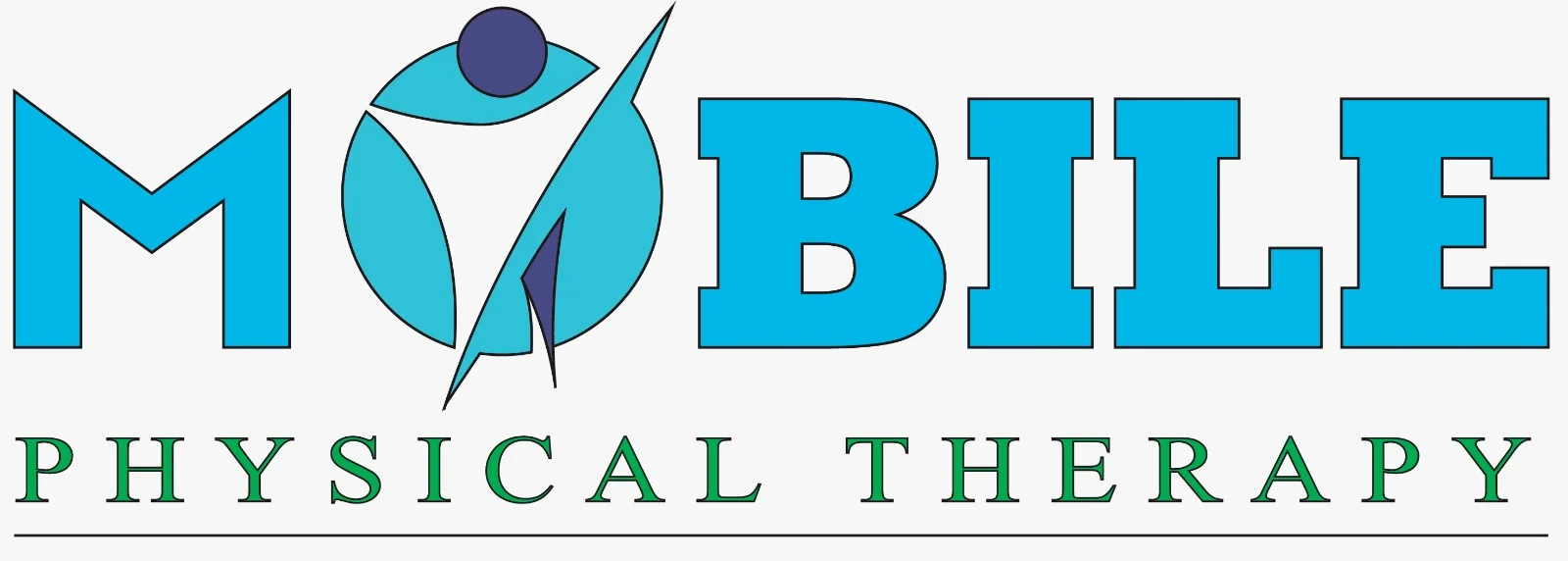

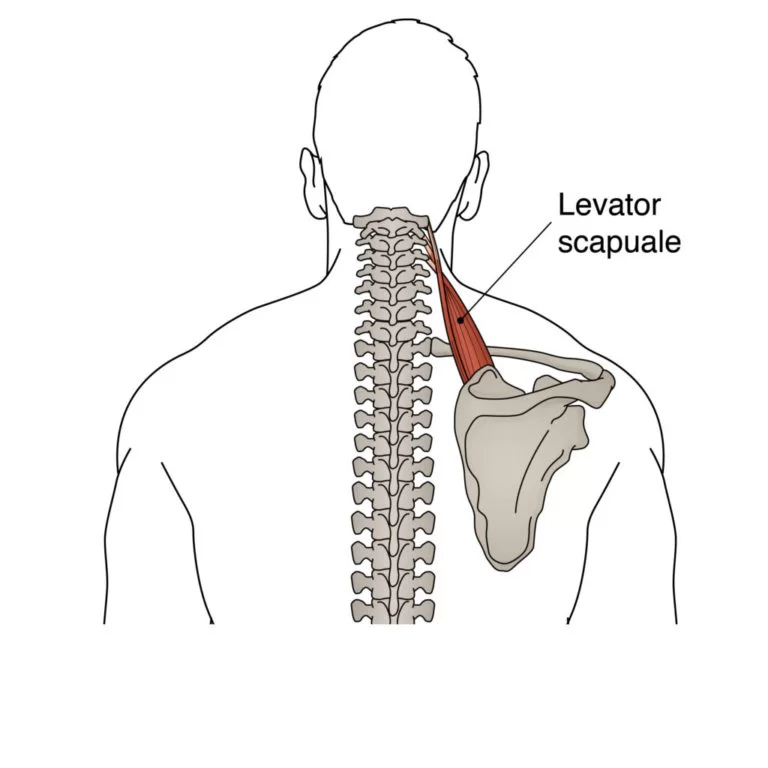

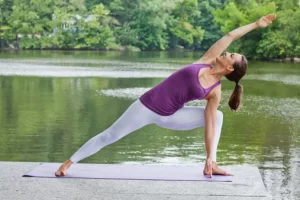

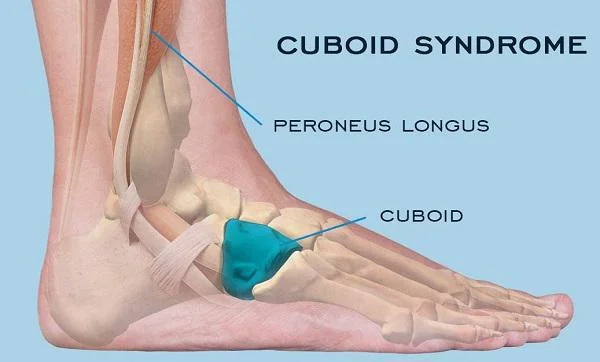
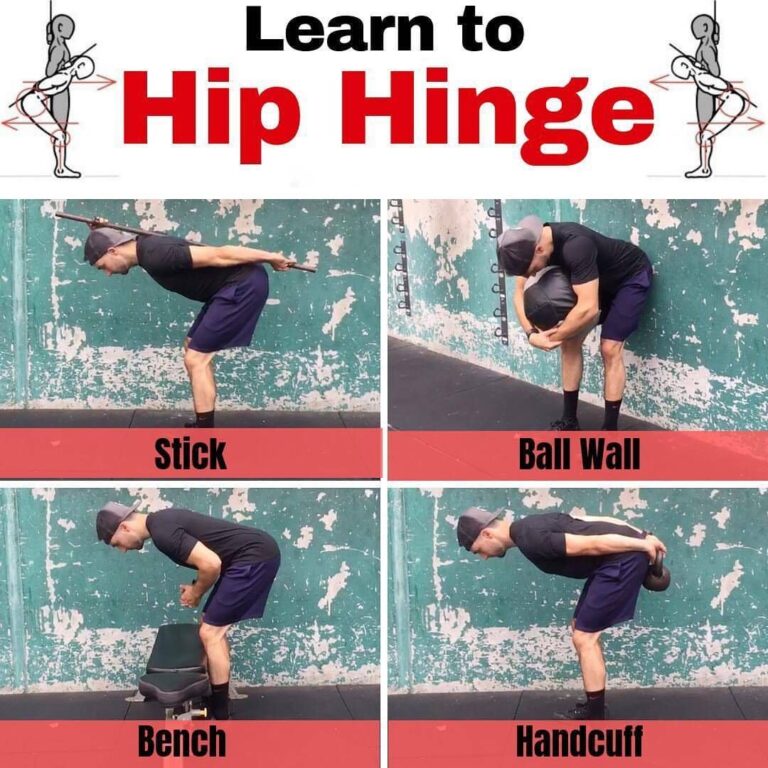
One Comment